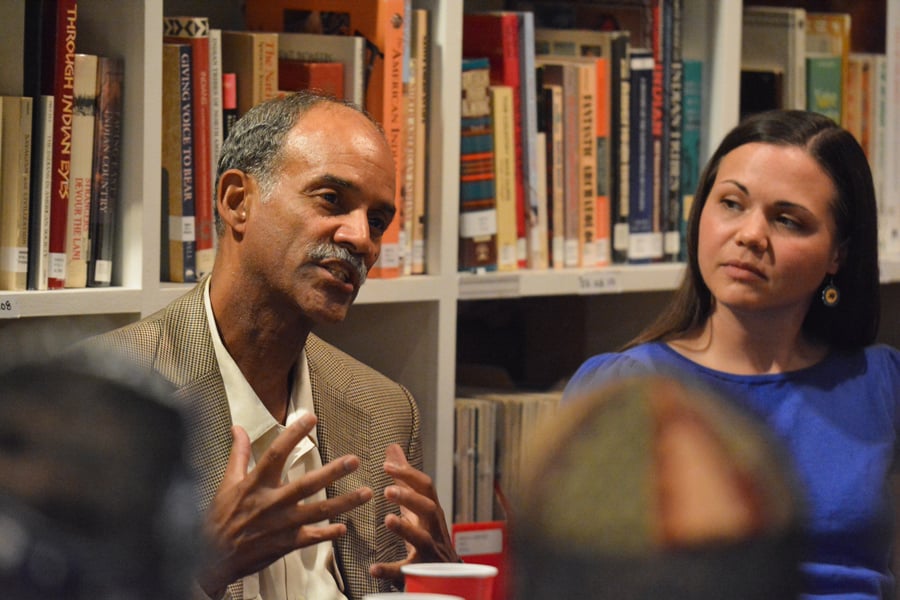Panel discusses influence of indigenous cultures on US history
Oreste Visentini/The Daily Northwestern
Tony Burroughs (left) and Bethany Hughes (right) speak at a panel held at Mitchell Museum of the American Indian. Panelists discussed how indigenous cultures shaped the country’s current identity and history.
October 6, 2017
Growing up around traces of her Choctaw ancestry — like the stickball sticks hung on display and hymnals placed on the curio cabinet — Bethany Hughes, Choctaw Nation of Oklahoma, said she was always proud of her identity.
“That we are Choctaws was always a pride of holding onto a Choctaw identity, which is a mark of survival and defiance in face of the culture and society preferring that identity to not exist,” Hughes said.
Hughes’ speech was part of a panel discussion Thursday hosted by the Mitchell Museum of the American Indian, 3001 Central St. Nearly 30 people attended the event.
The discussion, part of the museum’s 40th celebration series, featured black and American Indian panelists from the Chicago area in an effort to focus on how indigenous cultures shaped the country’s current identity and history.
Hughes was joined by African American historian and activist Pemon Rami, author and genealogist Tony Burroughs and Evanston-based fine art photographer Nora Lloyd.
The panelists explained the difficulty of growing up in a country that had put their ancestors through slavery, war and removal.
Burroughs said a part of his childhood was shaped by the color of his skin. Growing up in a black community on the South Side of Chicago, he said he did not grasp the notion of racism until after a baseball game injury. When he was 11, Burroughs said he was taken to a local hospital for treatment, but said he was turned away because of his race.
“That was the first time I understood the difference between black folks and white folks,” he said. “When I grew up, race was just not a concept but something I really had to deal with.”
Kathleen McDonald, executive director of the Mitchell Museum, said the mission of the museum is to promote deeper understanding and respect for American Indian people. The museum achieves this goal mainly through collections and interpretation of traditional and contemporary art and culture, McDonald said.
McDonald told The Daily the event was another way to bring to light how indigenous cultures have influenced the country.
Rami, one of the panelists, emphasized how important it was for the two minority communities to stick together.
“There are so many similarities we have in common,” Rami said. “But historically, what we don’t have in common are often used against us to keep us separated and to make us think we don’t have the power to pull together as indigenous people.”
Email: limingwan2021@u.northwestern.edu
Twitter: @piuadrianw



